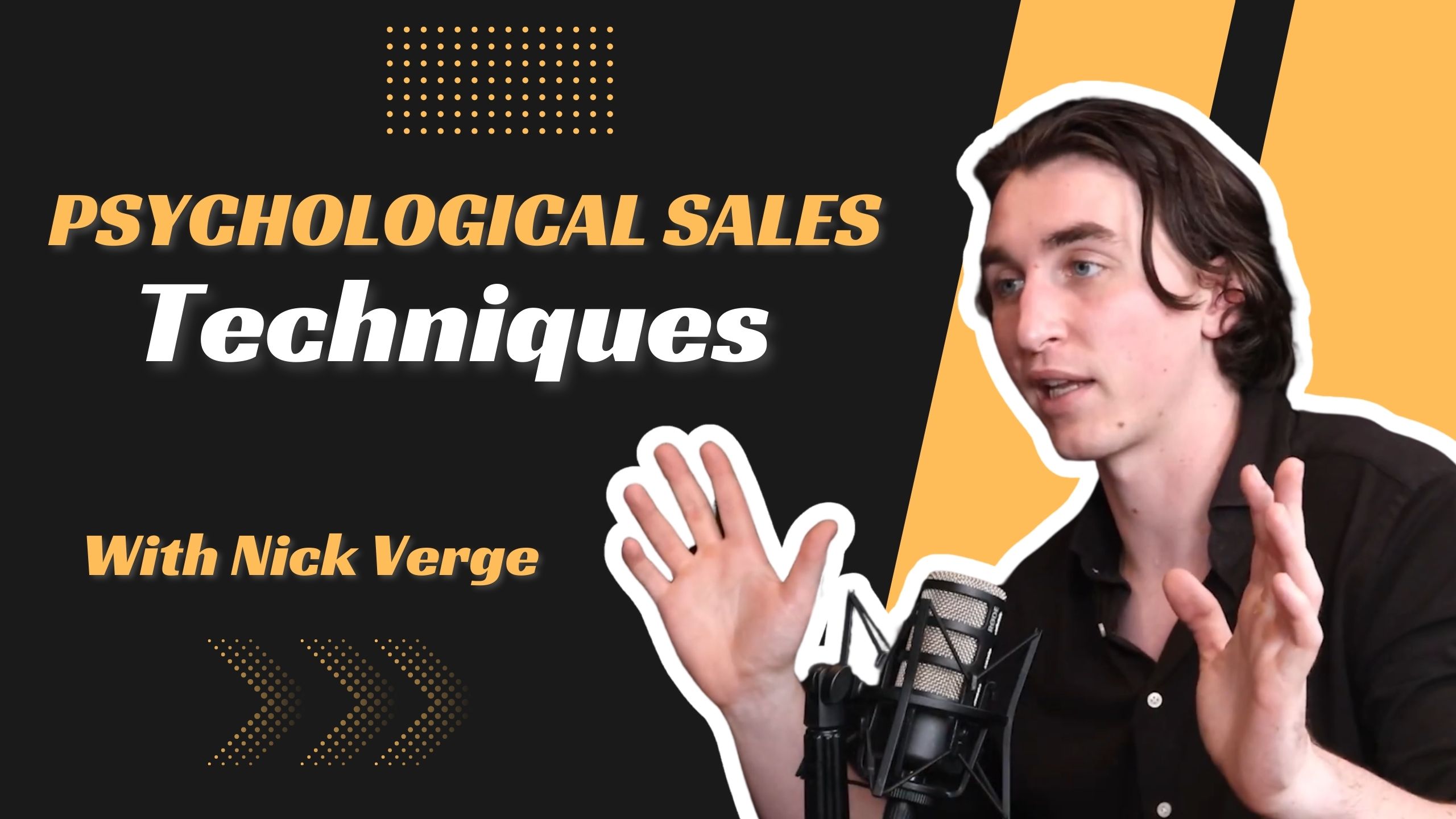You don’t have a “sales” problem.
You have a psychological alignment problem.
When a prospect says “no,” it’s almost never about price, logic, or timing.
It’s because something you said…or didn’t say…didn’t line up with who they believe they are or want to become.
And in a saturated, hyper-aware market? That misalignment is fatal.
In this post, we’re breaking down how to eliminate that disconnect and program a YES before you ever pitch the offer. These principles are pulled straight from a deep-dive conversation with marketing psychology expert Nick Verge, who’s helped some of the savviest direct response brands on the internet flip hesitation into sales.
👉 Want to go deeper? Listen to this Special Ops Podcast episode that covers it all
Let’s dive in.
1. Micro-Commitments: Build Trust With Small Yeses
Micro-commitments are the most underrated sales lever in the game.
They’re tiny “yeses” that stack up in your prospect’s subconscious, creating momentum that’s almost impossible to stop. You’re not asking for the sale yet, you’re building psychological compliance by getting them to agree with small, easy-to-say-yes-to ideas.
“I want them saying yes before they even know what I’m selling” – Nick Verge
What this looks like in the wild:
- “It’s frustrating when you do everything right… and still feel stuck, right?”
- “You’ve probably tried X and been burned before. Sound familiar?”
- “Wouldn’t it be a relief to finally have [specific outcome] handled?”
These aren’t “fluff” lines, they’re mental greasing of the wheels.
The goal is to create a rhythm of agreement that primes the brain for acceptance.
By the time you make the pitch, they’ve already agreed with you a dozen times and now not buying feels like a contradiction.
Pro Tip: Stack 3–5 micro-commitments in the first 2 minutes of your VSL or email. Build momentum before you ask for anything.
2. Identity Marketing: Sell Who They Want to Become
People don’t buy products.
They buy identity upgrades.
And if your offer doesn’t align with the self-image they aspire to, it won’t land, no matter how compelling the features or price point.
Verge summed it up perfectly:
“This is who I am, so this is what I do.”
This is the psychology behind identity marketing. It works because humans are desperate to stay consistent with their perceived identity.
If you’re selling fitness, don’t just sell “weight loss.” Sell the identity of being a fit leader who commands respect in every room.
If you’re selling business coaching, don’t sell “systems and scale.” Sell the identity of being the guy who figured it out and no longer plays small.
Think less about pain points, more about persona shifts.
Ask:
- Who does my buyer see themselves as today?
- Who do they want to become?
- How does my offer reinforce that evolution?
When your messaging makes them feel like this product is what people like me use, resistance collapses.
3. NLP Tactics: Language That Rewires Belief Loops
Forget the manipulative NLP crap you saw in old YouTube ads.
Used correctly, neuro-linguistic programming (NLP) is just smart language patterns that speak directly to the subconscious drivers your prospect doesn’t even realize they have.
Verge’s approach isn’t sleazy. It’s surgical.
Here’s how to use it:
- “Picture this…” Start future pacing: “Six months from now, stepping on the scale and seeing a number you haven’t hit in years.”
- “You’ve always known…” Anchors the desired action in their existing belief system: “You’ve always known you’re meant for more. You just didn’t have the right roadmap.”
- “This isn’t for you if…” Identity reversal tactic: “This isn’t for people who want quick wins and shortcuts. This is for people who want to build something that lasts.”
These phrases bypass logic and go straight to emotional alignment.
They’re not just persuasive, they’re personal.
You’re not selling with data. You’re narrating the story they’ve been secretly telling themselves.
When you frame the decision in terms of internal truth rather than external proof, you unlock deep, visceral trust.
4. The Punch–Icepack Formula: Balance Pressure With Permission
Most marketers are either too soft or too forceful.
Soft marketers tiptoe around objections. Hard-sell marketers beat the prospect with pain-based messaging until they tune out or click away.
Verge shared a game-changing concept from his mentor Ron Lynch:
“You can’t punch someone in the face 15 times and then say, ‘Now pay attention.’ You’ve got to put an icepack on them, tell them they’re a good boy, and then move on.”
This is called empathetic pressure.
Yes, you should confront the real cost of inaction.
Yes, you should call out the internal pain your prospect wants to avoid.
But right after you do?
Give them relief. Give them hope. Give them a believable escape route.
Example:
“Look, if you keep managing your sales team the way you are right now, you’re going to flatline. But the good news? That’s not your fault. You’ve been given outdated frameworks that don’t work for your stage of business and that’s about to change.”
You push the pain, but you pair it with permission to change.
That’s the icepack.
And it works because it honors their struggle and elevates their possibility.
5. Story-Driven Persuasion: Make Them the Main Character
Here’s the final domino.
People say “no” because they can’t imagine themselves succeeding.
They don’t see themselves in the testimonials. They don’t see their pain reflected. They don’t believe the result is for “someone like them.”
So stop making your offer the hero and make your buyer the hero instead.
“There are five to six identity stories inside every customer avatar. Your job is to tell all of them.” – Nick Verge
Here’s what that means:
- If you’re selling to parents, tell stories about tired dads and stressed-out moms.
- If you’re selling to solopreneurs, tell stories about late nights and burnout.
- If you’re selling to sales teams, tell stories about missed targets and micromanagement.
Every single one of your buyer personas needs to see themselves reflected and redeemed.
And that means pulling from different angles, different emotions, and different experiences.
The more stories you tell, the more people you activate.
Stories are not support.
They are the structure of conversion.
In Summary This Is What Selling With Psychological Sales Techniques Looks Like:
- Build micro-commitments to warm up the YES.
- Use identity marketing to speak to who they want to become.
- Apply NLP-style language to reframe beliefs and open loops.
- Follow the Punch–Icepack Formula to balance pain and hope.
- Stack identity-driven stories to turn your audience into believers.
Want to see it all in action?
👉 Listen to the full episode with Nick Verge here
Learn how top direct response marketers flip resistance into conversion without ever needing to “sell” the old-school way.

